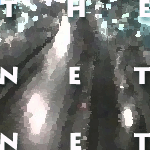A Nanotech Future
The first thing people said when I mentioned
I was reading The Diamond Age was "how does it
compare to Snow Crash?" It's impossible to
approach the more recent book without considering
Neal Stephenson's earlier
success, so I will say up front that I enjoyed
Diamond Age at least as
much, and found the writing richer and more complex,
if more whimsical and lacking in Snow Crash's
headlong momentum.
The Diamond Age posits an intricately
imagined nanotech future in which
nations no longer exist: people gravitate to
"phyles" of like-minded
individuals, large disseminated groups which afford
them protection, work
and a more or less predetermined lifestyle.
Possibly the richest and most
influential phyle is the New Victorians,
who are disciplined, wealthy and
tend to design and control (although not
to slavishly make use of) high
technology. People from poorer phyles
work for them and make
handicrafts so they can enjoy a largely
re-created culture in protected areas in
various pleasant spots around the world.
A highly placed engineer-artifex, John Percival
Hackworth, is approached by
the aged Equity Lord Alexander Chung-Sik
Finkle-McGraw with the commission
to invent a device that will educate
his granddaughter beyond the
complacency which he fears will be the
Victorians' downfall. Hackworth
creates the Young Lady's Illustrated Primer
of the book's title. It is not
merely a book, but a vastly complex
multimedia device designed to evolve
itself in response to its user. But he
makes a fatal error: he
pirates a copy of the book for his own
young daughter and loses it in a trivial
mugging. The book is snatched by a
thete -- a classless person, an illiterate
boy who brings it home and gives
it to his little sister Nell, whose
life is gradually transformed by it.
An outline of the plot hardly
begins to suggest the book's
overwhelming wealth of detail. Stephenson
sometimes tells rather more than you
want to know about the technical basis
of the gadgets that encrust the
story, so that at times it's not clear
whether the background is an excuse for
the plot or vice versa. But it isn't done
crudely: the details are woven into
the storyline itself so that they're
not extraneous. The issue of how this
society will confront yet another major
upheaval in its social and
technological fabric is crucial to the
story, and isn't resolved in the
orchestration of plot elements that closes the book.
That's not a criticism: there's nothing wrong
with leaving the reader wondering how such
a society would evolve, and I hope Stephenson won't
be tempted into the morass of sequel-writing
which has trapped so many sci fi writers.
What elevates the book is its high
spirits and sense of fun. Stephenson
must've enjoyed imagining all the hard-science
geeks plowing through the pages of children's-book
prose spoken by the primer -- stories crucial to the
plot in oblique but interesting ways so that they
can't be skipped. He also contrives to create
plausible characters called Dr. X and Judge Fang
and hints that another character is someone
from Snow Crash -- although this
isn't too obvious a maneuver and I admit to being quite pleased to
notice it. Besides that, in one of the scenes of
greatest tension he tosses off a
comic riff so funny he had me laughing
out loud on a crowded city bus.
In its lighthearted homage to the 19th century, with detailed
chapter headings like a book from the era,
this is what Gibson and Sterling's The
Difference Engine tried and failed so miserably to be.
A minor carp: the book is long, at 500 pages in paperback,
and it's typeset in tightly-leaded Palatino with
the children's-book passages in a faint and
nearly-illegible size of Optima. Bad move -- not a book
to read in a dim cafe.



